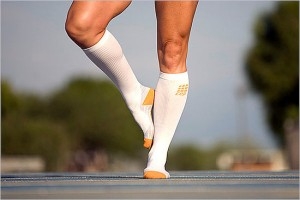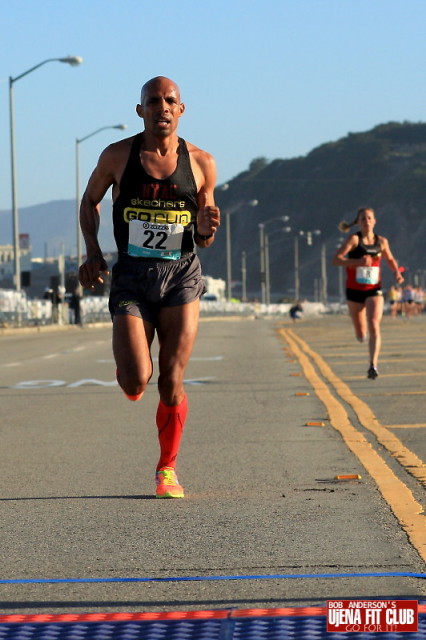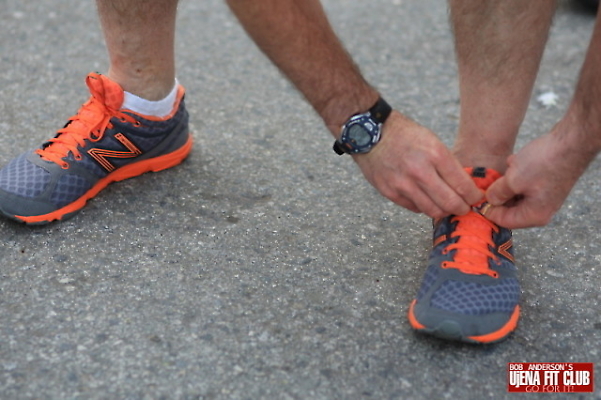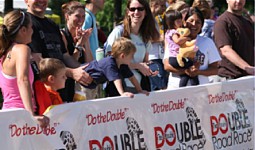100 Secret Training Ideas For Runners
Many of us have discovered training ideas which seem to work for us. Some are more tested than others. Best Road Races and The UjENA FIT Club is not endorsing these ideas but just sharing them with you. Add your Secret Training Ideas here. Include a photo when you can and be sure to name your idea. Only do one idea per post and just use enough words to explain the idea. Use examples of how it worked when possible. Hal Higdon is offering his Tip of the Day!
Click here to send us your Secret Training Idea · View all Secret Training Ideas
Posted Friday, October 31st, 2014
Strength training is important for both conditioning and injury prevention. I lifted weights and/or use exercise machines regularly in the... Read Secret Training Idea
Posted Tuesday, February 18th, 2014
by Rich StillerI didn’t plan to stop racing. I just meant to take a break. In April of 1995 I... Read Secret Training Idea
Posted Thursday, March 6th, 2014
By Christine RosenbloomHeading to the gym after work for a quick workout? Out for a morning walk with the dogs?... Read Secret Training Idea
Posted Monday, September 16th, 2013
by Hal HigdonWithin certain limits, the more miles you run the faster you can race. Double your training mileage from... Read Secret Training Idea
Why the Long Socks?
Monday, July 2nd, 2012
Improve blood flow and Performance
by Ujena Fit Club coach Barry Anderson “I see lots of runners wearing socks pulled up to their knees. Why the long socks?” Someone asked me this question not to long ago and I had to admit—I did not have an answer. I have also noticed that one of our members, Meb Keflezighi, often wears these long socks. There are many new “things” involved with running now that were not available in my days of running and coaching full time, and compression socks are one of them. The principal of using compression socks for the lower legs is similar to the reason that fighter jet pilots wear compression suits—only at a much lower level. When you run, particularly long distances, blood will pool in the legs due largely to gravity…including blood that contains lactic acid. It is believed that the use of compression socks can help improve blood flow through pushing blood back towards the heart.
Photo: Meb finishing this year's Bay to Breakers There have been several scientific studies with mixed results as to the overall benefit of improved blood flow and improved performance when these socks are worn during a race. One study that was reviewed did show slightly reduced lactate levels in the blood but could not rule out the psychological effect as also being a contributor to improved performance. In the studies reviewed, there is agreement that there is a faster lactate recovery rate when compression socks are worn after exercise. There is also evidence of decreased muscle soreness. These studies did suggest that graduated compression socks—those with tighter compression at the ankle end than the knee end—performed better in all tests. Give them a try if your haven’t already—particularly if you have tightness or soreness in your lower legs on a consistent basis. Maybe when Meb is not busy preparing for the Olympic marathon he can provide us with some of his thoughts on their use. Let us know your results if you have tried this training aid. Comments and Feedback
 I have thought about trying these socks...I know that Ujena Fit Club member Meb swears by them...any other members wearing them? I have thought about trying these socks...I know that Ujena Fit Club member Meb swears by them...any other members wearing them?Bob Anderson 7/2/12 12:12 pm  I use mine every once in a while... Mostly if I have a long run along the highway.... I have also worn them to bed at night when my legs have been tired. Not sure if they helped more physically or mentally.... I use mine every once in a while... Mostly if I have a long run along the highway.... I have also worn them to bed at night when my legs have been tired. Not sure if they helped more physically or mentally....Shari Mernett 7/3/12 6:34 am |
,,,,, |
Pre-Race Routine
Tuesday, June 26th, 2012
Sometimes It is the Little Things than can help you run a Faster Race
by Ujena Fit Club Coach Barry Anderson Does anyone else have a pre-race routine that you use nearly every time you race? Do you double tie your racing shoes but not your warm-up shoes? Do you always eat the same thing prior to the race—at a certain time before the race start? Do you wear the same socks—or always go sock-less? One of the last minute things that was always a part of my pre-race routine was to fold my race number as small as possible before attaching to my racing singlet. I always thought that I would gain a small advantage due to better aerodynamics—probably not true in the real world of science but in my mind is was a advantage. If you plan to add this practice to your pre-race routine, make sure that you follow instructions for securing your race number in case a portion of the number is removed at the finish line. We would like to hear from you. Let us know about your own idiosyncrasies in your pre-race routine. Comments and Feedback
 I believe in doing the same things before a race. Here is what I do. I get up at least two hours before the start. I will eat a half of a banana right away. I will drink a cup of coffee (decaf right now). I will go to the bathroom. I will NOT put on my racing shoes or racing singlet (always wear a red singlet and black racing shorts) until 15-20 minutes before the start. I will warm up in sweat pants, t-shirt and sweatshirt. I like to run a mile warmup. I want to break a sweat. Then I will put on my racing singlet and start getting used to the temp about 15 minutes before the start. I will go to the bathroom again and would have most likely gone 3-4 times since getting up. I want to clear my system. I will drink some water. Before putting on my racing flats I will rub my feet with Icy Hot. Makes my feet feel warm and different than a training run. (I am sure I am the only person in the world who does this. I also hardly ever get blisters and this might help that too.) I will eat one pack of glu before races 10k or longer. And I will make sure to carry one for 10 mile plus races. I will for sure double knot my shoes and tuck the laces into the other laces. I might have taken one Aleve one hour before too. Started this ten years back and it seems to help? I will get a good starting spot and off I go... I believe in doing the same things before a race. Here is what I do. I get up at least two hours before the start. I will eat a half of a banana right away. I will drink a cup of coffee (decaf right now). I will go to the bathroom. I will NOT put on my racing shoes or racing singlet (always wear a red singlet and black racing shorts) until 15-20 minutes before the start. I will warm up in sweat pants, t-shirt and sweatshirt. I like to run a mile warmup. I want to break a sweat. Then I will put on my racing singlet and start getting used to the temp about 15 minutes before the start. I will go to the bathroom again and would have most likely gone 3-4 times since getting up. I want to clear my system. I will drink some water. Before putting on my racing flats I will rub my feet with Icy Hot. Makes my feet feel warm and different than a training run. (I am sure I am the only person in the world who does this. I also hardly ever get blisters and this might help that too.) I will eat one pack of glu before races 10k or longer. And I will make sure to carry one for 10 mile plus races. I will for sure double knot my shoes and tuck the laces into the other laces. I might have taken one Aleve one hour before too. Started this ten years back and it seems to help? I will get a good starting spot and off I go...Bob Anderson 6/26/12 10:18 am  Wow! Your have had lots of practice at your pre-race routine this year...got it down pat! Like to see enough effort in your warm up to break a sweat...very important. Wow! Your have had lots of practice at your pre-race routine this year...got it down pat! Like to see enough effort in your warm up to break a sweat...very important.Barry Anderson 6/26/12 11:58 am |

Copyright 2025 UjENA Swimwear · Site Map · Feedback · Tell A Friend · Nominate a Race
Leaderboard · UjENA 5K · Double Road Race · UjENA Jam · UjENA Network

















